COVID-19 shows no sign of slowing down around the globe. Companies and organizations are relying on project management tools to get things done more than ever before. There are two categories of apps in the project management space. One has traditional solutions like Trello, Asana, and Jira. Other includes modular software like Notion, Coda, and Airtable. Among them, both Asana and Airtable are jumping the popularity charts among companies out there.
If you are having problems picking up a suitable project management software for your startup, then read along to find all the differences between the two modular software.
Airtable vs Asana
The comparison will be based on multiple factors including UI, project management features, templates, sharing, cross-platform availability, price, and more. Let’s get started.
Cross-Platform Availability
It’s a tie on paper. I said on paper as I have some observations about mobile apps. Both Asana and Airtable are available on Android, iOS, and Web.

Speaking of mobile apps, I found Asana to have a better and more polished UI with a native feel to it. Asana’s years of development is clearly evident here. Airtable still has some work to do with UX and layout optimization for a small screen. As of now, the app is simply displaying content as it is from the web app.
Visit Asana
Visit Airtable
User Interface
Most of your team members are new to such project management tools. It’s important to deliver an easy-to-use UI with simple navigation. Let’s start with Asana.
By default, Asana takes you to the home page. You can view your pending tasks and ongoing project from the right side. The left sidebar carries all the relevant sections like Home, Tasks, Portfolio, Goals, and Inbox. Users won’t have a hard time finding the options they are looking for. Asana has nailed the basics here.

Airtable is primarily a data management tool. It’s not limited to project management only. In many ways, Airtable is similar to Asana when it comes to managing projects. The software is simply using different terms throughout the program.

As is the case with other modular productivity software, the UI is straightforward and won’t give any hard time during your testing.
Create a Project and Invite Team Members
In Airtable, you can click on Add a workspace option, give it a relevant title, and start adding team members. Click on the little Share button beside the workspace and you can invite team members by email or share the workspace link with them.
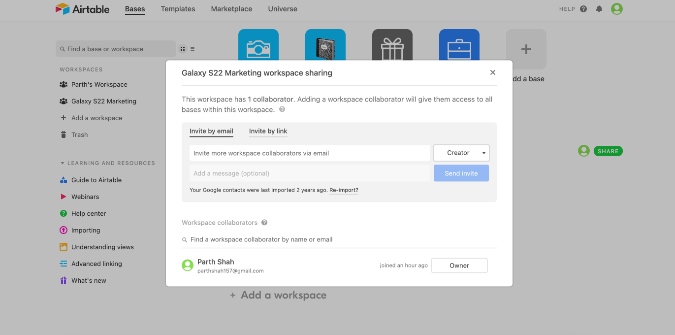
Asana, by comparison, asks too many details to get you started. When you try to create a blank project, the software will ask you to fill in details such as title, privacy, and the default project view. However, I like how Asana offers a live preview of each project view like Lists, Board, Timeline, and Calendar.
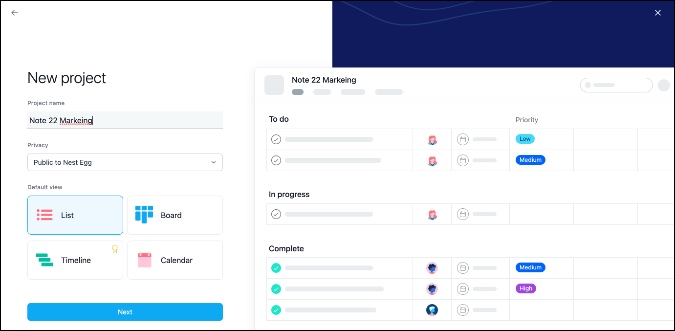
One can also add custom colors, icons, fields like priority and status to the project. After creating relevant sheets for a single project, you can click on Invite at the top and add members to the team.
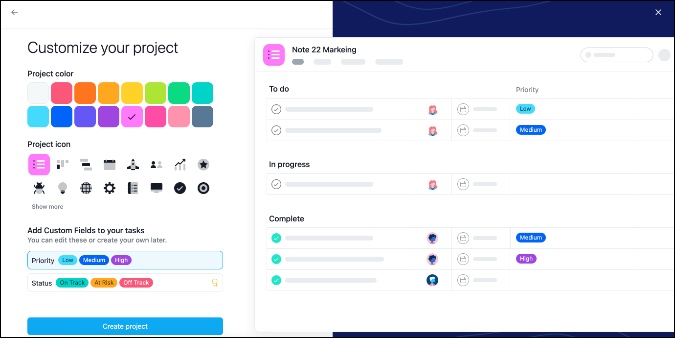
Templates
It’s 2021 and people hardly create a project from the scratch. It’s time-consuming and requires too much effort from the user side. Most modern solutions now come with built-in templates and Airtable and Asana are no exception here.
Click on the + icon in Asana, add a project name, and select one of the built-in templates from the list.

Asana offers Product Plan, Product Roadmap, Standup Meeting, Team Goals, User Research Sessions, and more. The list is slim for now, but should be more than enough for the majority out there.
Airtable offers a dedicated template gallery and they are not limited to project management only. The section is neatly divided into specific categories such as Product Launch, Project Management, Event Planning, Bug Tracker, and more. Airtable comfortably wins this round.
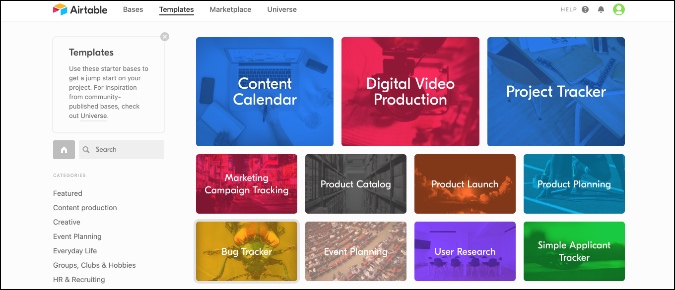
Project Management Features
Let’s get to the main talking point here – project management features. Starting with Airtable, you can create categories, assign a task to users, add a due date, integrate comments with images, and more. That’s the beauty of Airtable and modular productivity software in general.
It’s totally up to you how you want to customize the workspace on Airtable. One can also select from multiple views such as Grid, Form, Calendar, Kanban, and Gantt.
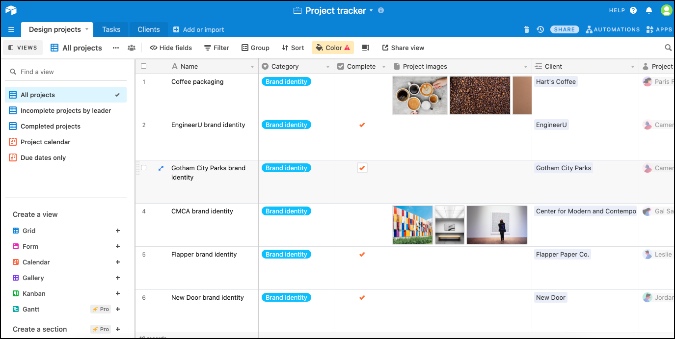
Asana isn’t far behind either. The software offers you to add sub-tasks, integrate files, add comments, tags, follow-up tasks, and more. You can’t customize it though but the default options should be more than enough for the majority out there.

You can also select from multiple board views including Timeline, Calendar, Lists, and a centralized Dashboard.
Automation
Automation plays a major role in any project management software. Airtable allows you to create cool automation scripts such as send a weekly digest, send a Tweet, send a message in a specific Slack channel, create board, and more. You can also explore third-party apps integration from the Marketplace Apps.

Asana also offers a similar implementation called Rules. Here is how it works. The admin can create custom rules based on team requirements. For example, you can set a rule like when a team member moves a task in-review tab, the marketing team automatically gets tagged and notified about the progress.

Another example is tags. If you have tagged a task as Priority 1, then the main manager gets auto-tagged and notified. You add a UI tag, and the design lead gets alarmed about the change.
Price
Speaking of pricing, Asana costs $10.99 per member per month. Airtable is has the same pricing strategy with $10 per seat per month.
Asana vs Airtable: How to Manage Projects on the Go
Both Airtable and Asana have nailed the project management niche with rich features and cross-platform availability. Airtable marches ahead with more templates, better customization, and automation with third-party apps integration.
Asana hits right back with a better interface, more project management features, and a cool Rules function.